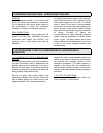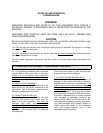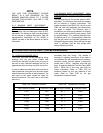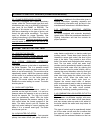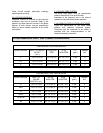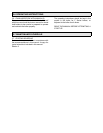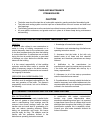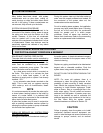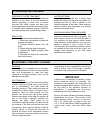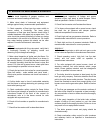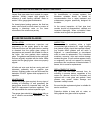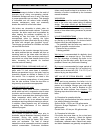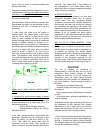
CAUTION
The boil out procedure outlined must be
performed by, or under the direct supervision of,
a qualified technician. The chemicals used
present a hazard of burns and physical injury if
mishandled. Always use suitable face mask,
goggles, protective gloves and garments when
handling caustic chemicals. Do not permit the
chemical to come into contact with skin or
clothing. Always follow the safety precautions on
the container's label. Add chemicals slowly and in
small amounts to prevent excessive heat and
agitation. Do not add water to acid. Do not add
water to dry chemical. This will cause splattering
and/or explosion and severe risk of personal
injury.
Boiling out under pressure is not recommended.
If boil out under pressure is required, competent
assistance must be provided.
Your water consultant or water treatment
company will be able to recommend a cleaning or
boil out procedure. In the event that such service
is unavailable or as yet not selected, the following
may be used.
1. The boil out of the boiler and system is neither
difficult nor expensive. The chemicals needed for
cleaning are readily available. Trisodium
phosphate, and sodium hydroxide (lye) are the
most commonly used chemicals. Use only one
type of solution in the system. The amount of
chemical required will vary according to
conditions, but an amount of one pound of
chemical per fifty gallons of water is suggested.
2. Before introducing the solution into the boiler,
an overflow pipe should be attached to the top of
the boiler and routed to a safe point of discharge.
3. Remove all safety valves to ensure that none
of the solution will come into contact with the
valve seats. Use care in removing and reinstalling
valves.
4. All valves in the piping to and from the system
must be closed to prevent the chemical solution
from getting into the system.
5. Gauge glasses must be protected from contact
with the boil out chemicals.
6. Fill the boiler with clean softened water until the
water level reaches the upper header. Then add
the cleaning solution into the upper header. Add
more clean water until the boiler is completely
filled. The water used for this initial fill should be
at room temperature, and must be softened as
noted.
7. After filling, fire the boiler intermittently (at low
fire) at a frequency as necessary to hold the
boiler solution at boiling point temperature. DO
NOT PRODUCE STEAM PRESSURE.
Boil the
water, supervised at all times, for at least five
hours.
8. After the five hour boil out, begin to add a small
amount of fresh softened water so as to create a
slight overflow of the overflow pipe. This will carry
out impurities which have accumulated at the
water surface. Continue to apply heat and
overflow until the water emitted from the overflow
pipe clears. Then shut off burner.
9. Let the boiler cool to 120F or less. Then drain
the boiler. Use caution that the water is
discharged with safety.
10. Remove the inspection/cleanout openings in
the boiler upper and lower headers and wash the
waterside surfaces thoroughly using high
pressure water stream.
11. Inspect the boiler's internal (waterside)
surfaces thoroughly after the procedure. If the
surfaces are not clean, repeat the boil out.
12. After boil out, close all openings. Install relief
valves, gauge glasses and other components as
necessary. Completely fill the boiler with fresh,
softened, ambient temperature water. Fire the
boiler at low fire until water temperature of at least
180F is reached. This will drive off dissolved
gases.
13. The boiler is now ready to operate.
IMPORTANT
If boiler is not to be operated within 24 hours, a
lay-up procedure is required. Refer to instruction
for lay-up.



